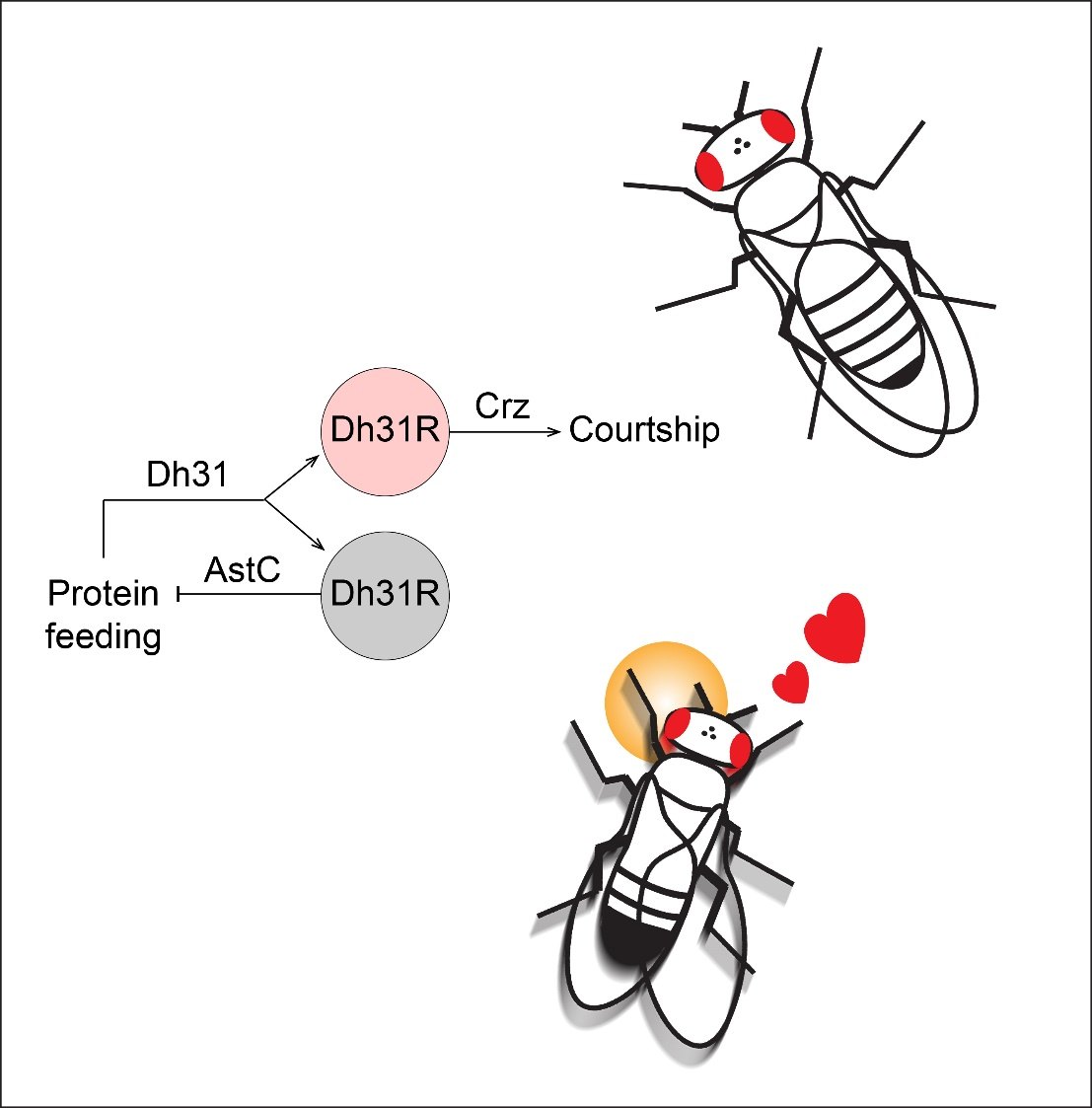
Senior Principal Investigator
Institute of Molecular Physiology
wangjing@szbl.ac.cn
2022 - PresenInstitute of Molecular Physiology Shenzhen Bay Laboratory Director, Senior Principal Investigator
2004-2024University of California San Diego Assistant Professor, Associate Professor, Professor
2000-2004Columbia University Postdoctoral Scientist
1997-2000Bell Laboratories Postdoctoral Fellow
1991-1997University of Iowa Ph.D.
1982-1990Tsing Hua University B.S, M.S
Products of advanced technologies, such as airplanes and microchips, and neural systems exhibit similar systems-level logic of operation, despite their vastly different physical implementations. Engineering approach to understand systems neurobiology has been the main thrust of Dr. Jing Wang’s research group. He uses Drosophila as a model system, leveraging its powerful genetic toolkits and its anatomical simplicity. He has been focusing on innate behaviors, which are inborn and automatic, such as feeding and mating because these robust behaviors have been sculpted by evolution and are strongly regulated by neuromodulators. His current research focuses on gut-brain communication and its role in regulating feeding and non-feeding behaviors, aiming to understand the underlying logic of neural circuitry.
Dr. Wang’s early works include the deconstruction of the complex olfactory circuit for innate preference into two main modules, one for attraction and another for aversion behavior. In subsequent studies, his group addressed the question of how hunger influences olfactory processing and found two feedback loops: a positive feedback loop enhancing the attraction channel and a negative feedback loop suppressing the aversion channel. His other studies reveal how age and population density regulate courtship behavior in Drosophila. These studies highlight the conceptual framework in applying engineering principles to deconstruct and analyze neural circuits to understand how flexible sensory processing regulates behavioral decision.
His studies have been powered by technological innovations. As a postdoctoral scientist, he pioneered the application of the genetically encoded calcium sensor GCaMP for in vivo functional imaging. This study helped revolutionize modern research in neural circuits and behavior. Since establishing his independent laboratory in 2004, he has made numerous technical contributions to the field. For example, Dr. Wang engineered a novel activity reporter system based on NFAT, a calcium-dependent transcription factor, which has been widely used to mark and manipulate behaviorally relevant neural circuits in intact flies. Additionally, he developed a non-invasive imaging system to visualize structure and function in the living Drosophila brain by coupling three-photon microscopy with the genetic expression of fluorescent proteins and GCaMP.
Dr. Wang’s current research focuses on gut-brain communication, driven by his recent discoveries that a gut-released neuropeptide plays a critical role in behavioral prioritization in Drosophila. Specifically, this neuropeptide targets two different circuit modules in the brain: one that terminates feeding and another that promotes courtship. Thus, the neuromodulation of central circuits by the gut-released neuropeptide can be considered as a protocol that defines the gut-brain interaction.

2024 The 19th Harold W. Beams Lecture, Department of Biology, University of Iowa
2023 Plenary Lecture, The 6th International Insect Hormone Workshop, Riverside, CA
2018 Keynote Lecture, Cutting Edge in Life Science Symposium, KAIST, Korea
2005-2008 Searle Scholar
2005-2008 Beckman Young Investigator
2004-2009 Chris and Warren Hellman Faculty Scholar, UCSD
1990 Best Student of the Year Prize, first honor, Tsinghua University, China
1. Lin HH, Kuang MC, Hossain I, Xuan Y, Beebe L, Shepherd AK, Rolandi M, Wang JW. (2022) A nutrient-specific gut hormone arbitrates between courtship and feeding. Nature. 602(7898):632-638.
2. Sethi S, Lin HH, Shepherd AK, Volkan PC, Su CY, Wang JW. (2019) Social Context Enhances Hormonal Modulation of Pheromone Detection in Drosophila. Current Biology. 29(22):3887-3898.
3. Tao X, Lin HH, Lam T, Rodriguez R, Wang JW, Kubby J. (2017) Transcutical imaging with cellular and subcellular resolution. Biomedical Optics Express. 8(3):1277.
4. Lin HH, Cao DS, Sethi S, Zeng Z, Chin JS, Chakraborty TS, Shepherd AK, Nguyen CA, Yew JY, Su CY, Wang JW. (2016) Hormonal Modulation of Pheromone Detection Enhances Male Courtship Success. Neuron. 90(6):1272-85.
5. Ko, K.I., Root, C.M., Lindsay, S.A., Zaninovich, O.A., Shepherd, A.W., Wasserman, S.A., Kim, S.M., Wang, J.W. (2015) Starvation Promotes Concerted Modulation of Appetitive Olfactory Behavior via Parallel Neuromodulatory Circuits. eLife. 4:e08298.
6.Masuyama K, Zhang Y, Rao Y, Wang JW. (2012) Mapping neural circuits with activity-dependent nuclear import of a transcription factor. J. Neurogenetics. 26: 89-102.
7. Root C.M., Ko K.I., Jafari A., and Wang J.W. (2011) Presynaptic facilitation by neuropeptide signaling mediates odor-driven food search. Cell. 145: 133-44.
8. Semmelhack J.L. and Wang J.W. (2009) Select Drosophila glomeruli mediate innate olfactory attraction and aversion. Nature. 459:218-23.
9. Root C.M., Masuyama K., Green D.S., Enell L.E., Nässel D.R., Lee C.H., Wang J.W. (2008) A presynaptic gain control mechanism fine-tunes olfactory behavior. Neuron. 59:311-21.
10. Wang, J.W., Wong, A.M., Flores, J., Vosshall, L.B., and Axel, R. (2003). Two-photon calcium imaging reveals an odor-evoked map of activity in the fly brain. Cell. 112: 271-282.